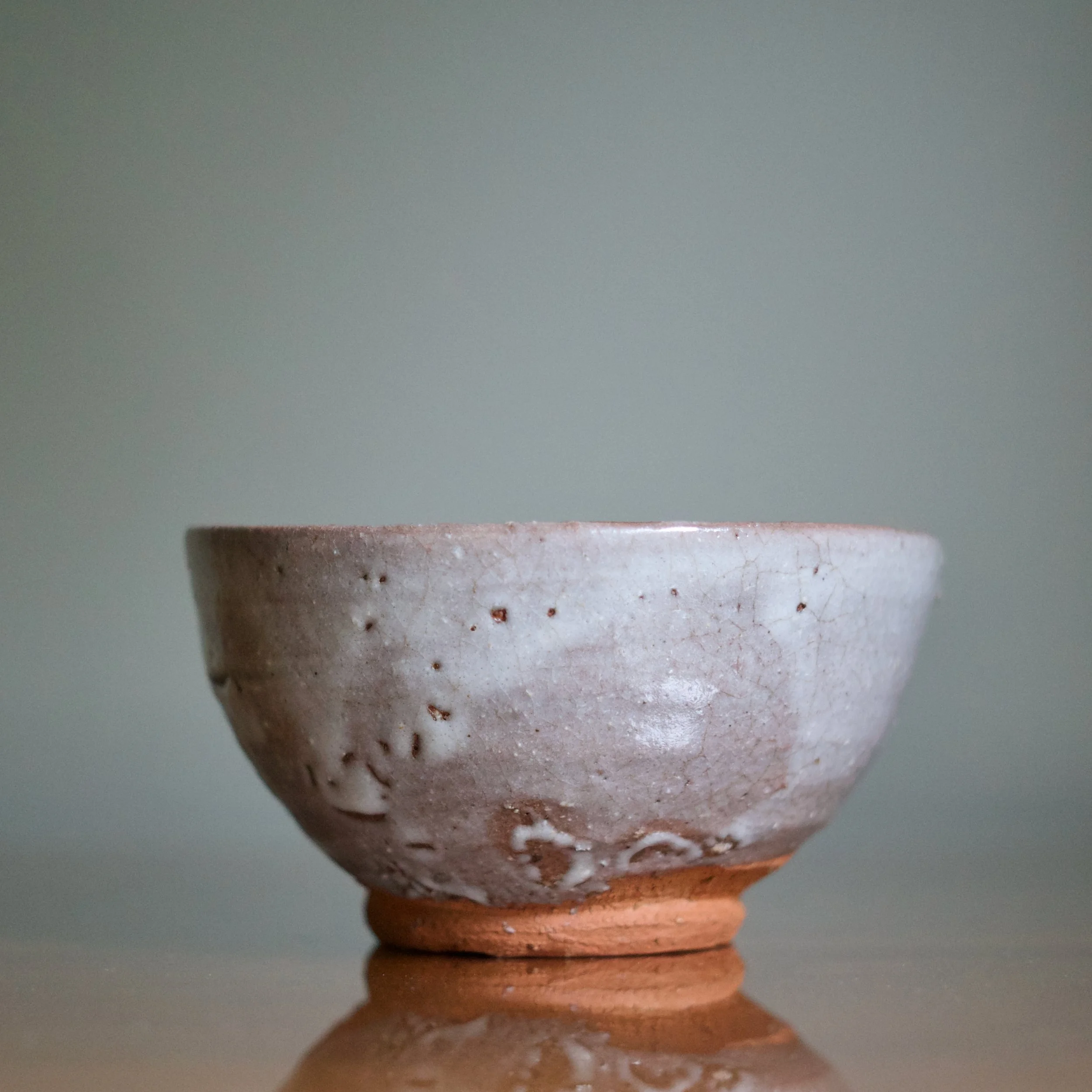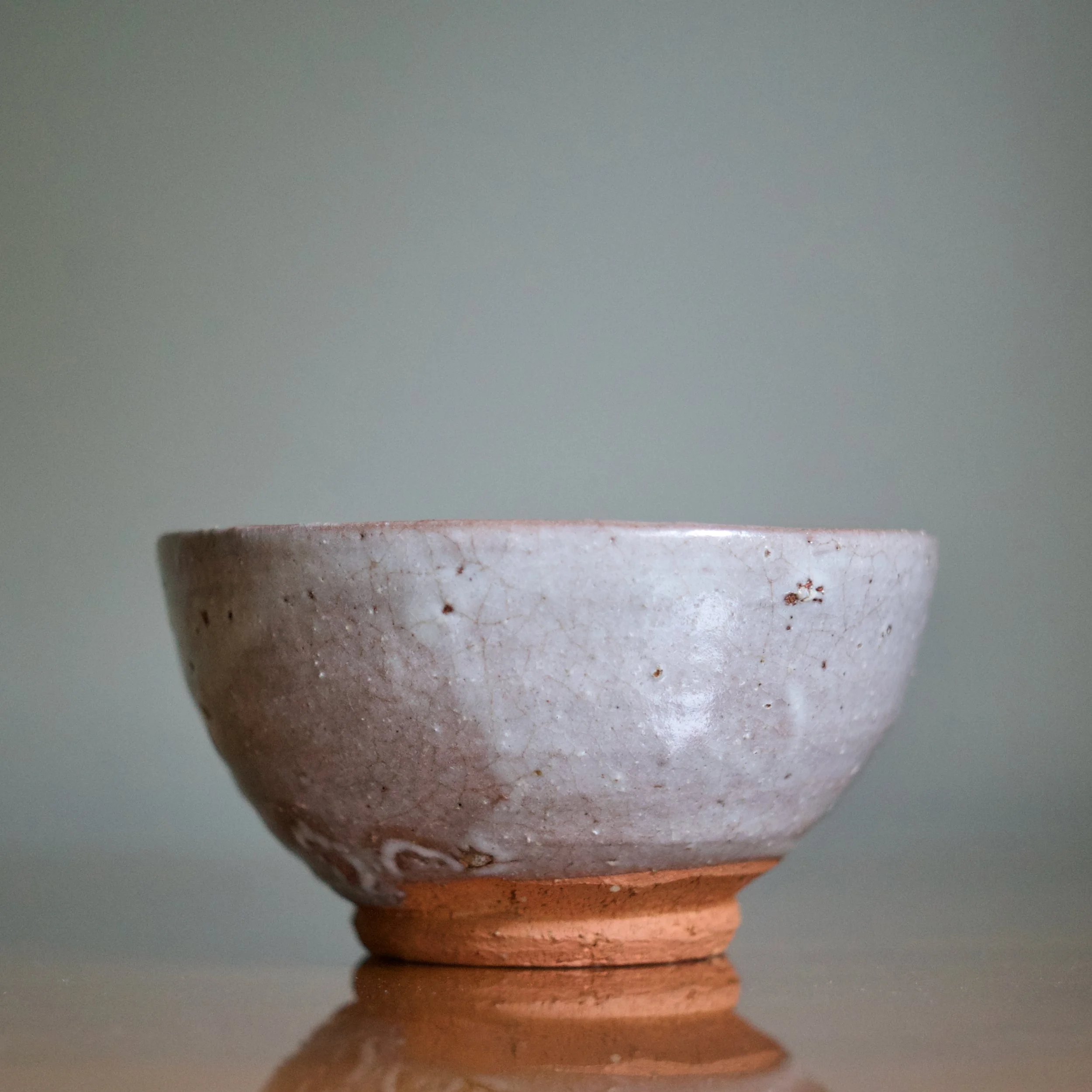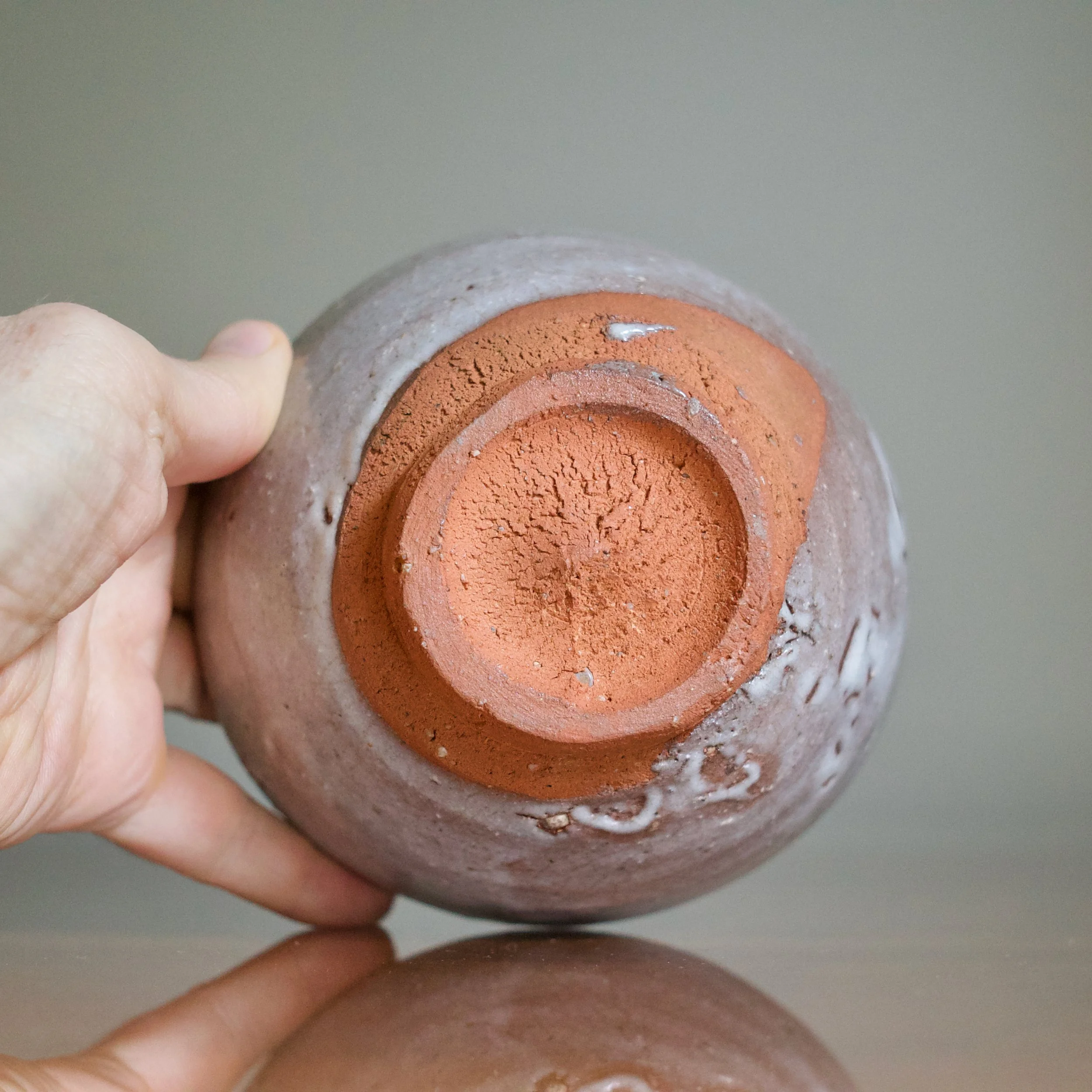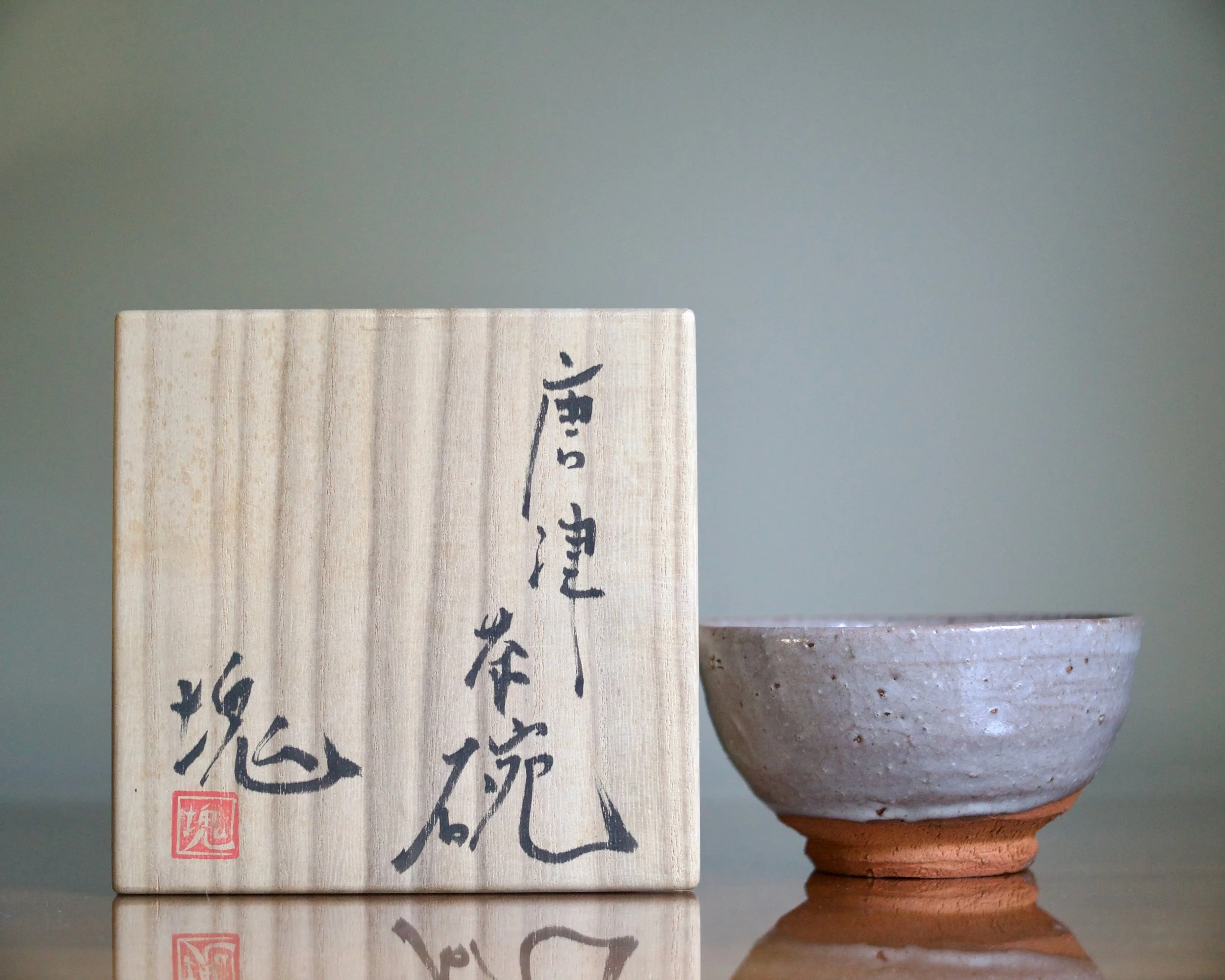Kai TSUJIMURA (1976 - )
"唐津茶碗” Karatsu chawan
Sakurai, Nara; c. 2010’s. 2 7/8” high by 5 1/8” wide.
$575 (CAD)
The second son of Shiro Tsujimura - one of the greatest living potters - Kai grew up in his father’s studio, with his older brother Yui, surrounded by nature, every aspect of life intertwining with ceramics. In “Shiro Tsujimura: An Art of Living” Hiroshi Sugimoto writes about visiting Shiro in the 70’s, “there were two small children cavorting about, stark naked and barefoot. They reminded me of free-range chickens.”
By 2001 Kai had settled not far in Sakurai, establishing his own studio and anagama kiln where he wood-fires his ceramics today. His practice has grown to include the wares of the Nara area such as Iga and Shigaraki; Mino wares like Shino, Oribe and Hikidashi-guro; and Korean inspired pottery with fine examples of Ido tea bowls.
This Karatsu bowl is another example of Yui’s “Korean” ceramics. Its “wan-nari” wooden bowl shape is common to the Kyushu region where Karatsu ware evolved after Korean potters moved there in the 16th century. Karatsu is known for a ruggedness that embodies chadō’s zen aesthetic of imperfection.
Like most Karatsu wares, with Yui’s tea bowl clay is king: an unglazed foot and generous area above reveal a warm and soft orange-brown clay. Vibrant and naked, it pops against the lavender-grey ash glaze. And the foot features the crepe de chine fabric texture known to Karatsu, achieved by trimming the bottom in the opposite direction it was turned.
But the highlight is the ishihaze stone bursts emerging from the clay. Over the long wood-firing, heat slowly pulled the stones from the body to the surface. A small granite stone cracks through the outside wall. And a quartz pebble rests inside the bottom, appearing as the last sips of tea empty from the bowl. Like an eye awake.
Comes with the signed, stamped, and titled wood box, and stamped wrapping cloth.










